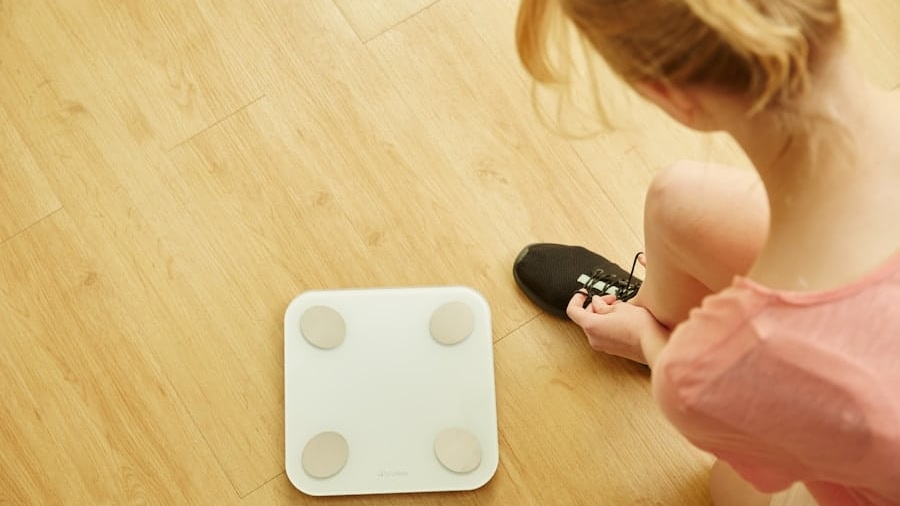The advent of wearable technology has revolutionized various sectors, and healthcare is no exception. In pediatric health tracking, wearables have emerged as a transformative tool, enabling parents and healthcare providers to monitor children’s health metrics in real-time. These devices, which can range from smartwatches to fitness bands, are designed to collect data on various health parameters such as heart rate, physical activity, sleep patterns, and even stress levels.
The integration of these technologies into pediatric care not only enhances the ability to track health but also empowers families to take a proactive approach to their children’s well-being. Wearable devices are particularly beneficial in pediatric health tracking due to their user-friendly interfaces and the engaging nature of their design. Children are often more inclined to wear a device that is colorful and interactive, making it easier for parents to encourage consistent use.
Moreover, the data collected by these devices can be invaluable for healthcare providers, offering insights that can lead to more personalized care plans. As the landscape of pediatric healthcare continues to evolve, the role of wearables is becoming increasingly significant, paving the way for a future where technology and health management are seamlessly integrated.
Key Takeaways
- Wearables in pediatric health tracking offer a promising way to monitor and manage children’s health in real-time.
- The benefits of using wearables for pediatric health tracking include improved disease management, early detection of health issues, and increased patient engagement.
- Types of wearables available for pediatric health tracking include smartwatches, fitness trackers, and medical-grade monitoring devices.
- Challenges and limitations of using wearables for pediatric health tracking include data privacy concerns, accuracy of measurements, and the need for healthcare professional interpretation.
- Ethical considerations in using wearables for pediatric health tracking include informed consent, data security, and the potential for stigmatization.
Benefits of Using Wearables for Pediatric Health Tracking
One of the primary benefits of using wearables for pediatric health tracking is the ability to monitor vital signs and activity levels continuously. This real-time data collection allows for early detection of potential health issues, which is crucial in a pediatric setting where children may not always communicate their discomfort or symptoms effectively. For instance, a wearable device that tracks heart rate variability can alert parents and doctors to irregularities that may indicate underlying health problems, such as arrhythmias or other cardiovascular issues.
Additionally, wearables can foster a sense of responsibility and independence in children regarding their health. By engaging with their own health data, children can learn about the importance of physical activity and healthy habits from an early age.
For example, gamified features in many wearable devices encourage children to meet daily step goals or participate in challenges with friends, making physical activity more enjoyable. This not only promotes a healthier lifestyle but also instills lifelong habits that can contribute to better overall health as they grow older.
Types of Wearables Available for Pediatric Health Tracking

The market for wearable technology has expanded significantly, offering a variety of devices tailored specifically for children. Fitness trackers are among the most common types of wearables used in pediatric health tracking. These devices typically monitor physical activity levels, sleep patterns, and sometimes even heart rate.
Brands like Fitbit and Garmin have developed child-friendly versions of their fitness trackers that feature vibrant colors and customizable designs, making them appealing to younger users. Smartwatches designed for children also play a crucial role in health tracking. These devices often come equipped with features such as GPS tracking, messaging capabilities, and emergency alerts, providing parents with peace of mind while also allowing for health monitoring.
For instance, the Apple Watch has introduced features that enable heart rate monitoring and ECG capabilities, which can be particularly beneficial for older children and adolescents. Furthermore, specialized medical wearables are emerging that focus on specific health conditions, such as asthma or diabetes management, providing targeted support for children with chronic illnesses.
Challenges and Limitations of Using Wearables for Pediatric Health Tracking
Despite the numerous advantages of wearables in pediatric health tracking, several challenges and limitations must be addressed. One significant concern is the accuracy and reliability of the data collected by these devices. Many wearables are designed primarily for fitness enthusiasts and may not be calibrated for the unique physiological characteristics of children.
For example, discrepancies in heart rate readings can occur due to factors such as skin thickness or movement during play. This raises questions about the validity of the data being used to inform healthcare decisions. Another challenge is the potential for over-reliance on technology.
While wearables can provide valuable insights into a child’s health, they should not replace traditional medical assessments or consultations with healthcare professionals. Parents may become overly dependent on the data provided by these devices, leading to unnecessary anxiety or misinterpretation of health indicators. Additionally, there is the risk that children may feel pressured to meet certain fitness goals set by their wearables, which could lead to unhealthy behaviors or stress related to performance.
Ethical Considerations in Using Wearables for Pediatric Health Tracking
The use of wearables in pediatric health tracking raises several ethical considerations that must be carefully navigated. One primary concern is privacy and data security. Children’s health data is sensitive information that requires stringent protection measures to prevent unauthorized access or misuse.
Parents must be informed about how their child’s data will be used, stored, and shared by wearable manufacturers and healthcare providers. Transparency in data handling practices is essential to build trust between families and technology providers. Moreover, there is an ethical obligation to ensure that the use of wearables does not exacerbate existing inequalities in healthcare access.
Families from lower socioeconomic backgrounds may not have the means to invest in advanced wearable technology or may lack access to reliable internet services necessary for data transmission.
It is crucial for stakeholders in pediatric healthcare to advocate for equitable access to wearable technology and consider how these tools can be made available to all families.
Case Studies: How Wearables Have Supported Pediatric Health Tracking

Several case studies illustrate the positive impact of wearables on pediatric health tracking. One notable example involves a pilot program implemented in a school district where students were provided with fitness trackers to monitor their physical activity levels throughout the day. The program aimed to combat rising obesity rates among children by encouraging active lifestyles.
Data collected from the wearables showed a significant increase in daily activity levels among participants, leading to improved overall fitness and engagement in physical education classes. Another compelling case study comes from a healthcare provider that integrated wearable technology into its management plan for children with asthma. By equipping young patients with smart inhalers connected to mobile applications, healthcare providers could track medication usage and environmental triggers in real-time.
This approach allowed for more personalized asthma management plans tailored to each child’s specific needs. The results demonstrated a marked decrease in emergency room visits and hospitalizations among participants, highlighting how wearables can enhance chronic disease management in pediatric populations.
Future Trends and Developments in Wearables for Pediatric Health Tracking
As technology continues to advance at a rapid pace, the future of wearables in pediatric health tracking looks promising. One emerging trend is the integration of artificial intelligence (AI) into wearable devices. AI algorithms can analyze vast amounts of data collected from wearables to identify patterns and predict potential health issues before they arise.
For instance, AI could help detect early signs of anxiety or depression in children by analyzing changes in sleep patterns or physical activity levels over time. Additionally, there is a growing emphasis on developing wearables that cater specifically to children with chronic conditions. Innovations such as smart patches that monitor glucose levels for diabetic children or wearable ECG monitors for those with heart conditions are becoming more prevalent.
These specialized devices not only enhance monitoring capabilities but also provide real-time feedback that can be crucial for managing complex health issues effectively.
Recommendations for Parents and Healthcare Providers Using Wearables for Pediatric Health Tracking
For parents considering the use of wearables for their children’s health tracking, it is essential to choose devices that are age-appropriate and designed specifically for pediatric use. Engaging children in the selection process can foster enthusiasm about wearing the device consistently. Parents should also take an active role in interpreting the data collected by these devices rather than relying solely on automated feedback or alerts.
Healthcare providers play a critical role in guiding families on how best to utilize wearable technology within a broader context of pediatric care. They should educate parents about the limitations of wearables and emphasize that these tools should complement traditional medical assessments rather than replace them. Regular check-ins between healthcare providers and families can help ensure that any concerns arising from wearable data are addressed promptly and appropriately.
In conclusion, while wearables present exciting opportunities for enhancing pediatric health tracking, it is vital for both parents and healthcare providers to approach their use thoughtfully and responsibly. By fostering collaboration between families and medical professionals, we can harness the full potential of wearable technology while ensuring that children’s health remains at the forefront of our efforts.
TechRepublic recently published an article that helps IT decision-makers identify technologies that can support various industries, including healthcare. This article could be beneficial for those interested in learning more about the latest advancements in wearables for pediatric health tracking. To read more about this topic, check out the article here.
FAQs
What are wearables?
Wearables are electronic devices that can be worn as accessories or clothing. They are equipped with sensors and software that enable them to collect and transmit data about the wearer’s health and fitness.
How do wearables support pediatric health tracking?
Wearables can track various aspects of pediatric health, such as physical activity, sleep patterns, heart rate, and even location. This data can provide valuable insights for parents and healthcare providers to monitor a child’s health and well-being.
What are the benefits of using wearables for pediatric health tracking?
Wearables can help parents and healthcare providers to monitor a child’s health in real-time, identify any potential health issues early on, and encourage healthy behaviors such as physical activity and proper sleep habits.
What are some popular types of wearables for pediatric health tracking?
Popular types of wearables for pediatric health tracking include fitness trackers, smartwatches, and even specialized devices designed specifically for children, such as GPS-enabled smartwatches with calling and messaging capabilities.
Are there any concerns or limitations with using wearables for pediatric health tracking?
Some concerns include privacy and data security, as well as the potential for over-reliance on technology for monitoring a child’s health. Additionally, not all wearables are designed with children in mind, so it’s important to choose age-appropriate devices.

